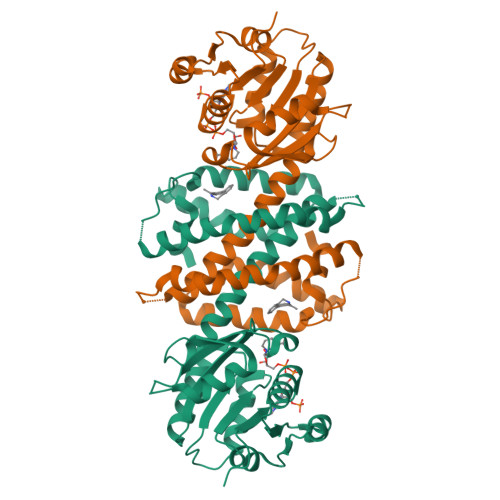Biocatalytic Routes to Enantiomerically Enriched Dibenz[c,e]azepines.
France, S.P., Aleku, G.A., Sharma, M., Mangas-Sanchez, J., Howard, R.M., Steflik, J., Kumar, R., Adams, R.W., Slabu, I., Crook, R., Grogan, G., Wallace, T.W., Turner, N.J.(2017) Angew Chem Int Ed Engl 56: 15589-15593
- PubMed: 29024400
- DOI: https://doi.org/10.1002/anie.201708453
- Primary Citation of Related Structures:
5OJL - PubMed Abstract:
Biocatalytic retrosynthetic analysis of dibenz[c,e]azepines has highlighted the use of imine reductase (IRED) and ω-transaminase (ω-TA) biocatalysts to establish the key stereocentres of these molecules. Several enantiocomplementary IREDs were identified for the synthesis of (R)- and (S)-5-methyl-6,7-dihydro-5H-dibenz[c,e]azepine with excellent enantioselectivity, by reduction of the parent imines. Crystallographic evidence suggests that IREDs may be able to bind one conformer of the imine substrate such that, upon reduction, the major product conformer is generated directly. ω-TA biocatalysts were also successfully employed for the production of enantiopure 1-(2-bromophenyl)ethan-1-amine, thus enabling an orthogonal route for the installation of chirality into dibenz[c,e]azepine framework.
Organizational Affiliation:
School of Chemistry, University of Manchester, Manchester Institute of Biotechnology, 131 Princess Street, Manchester, M17DN, UK.


















